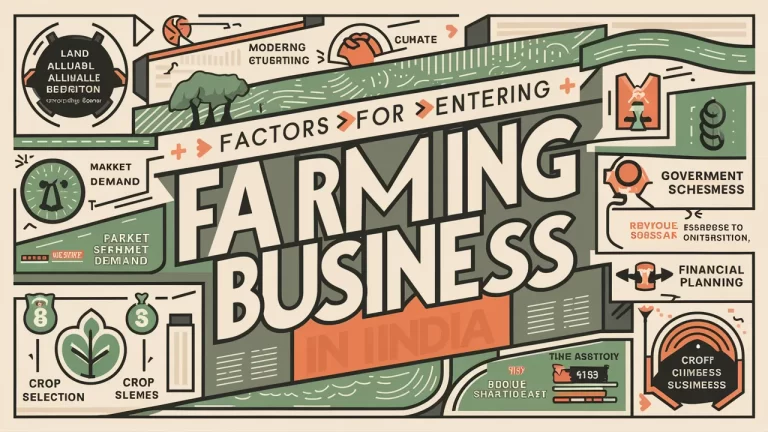India’s Path to Middle-Income Status: Examining the Role of Productivity, Politics, and Infrastructure
Introduction
India is one of the world’s most dynamic and rapidly growing economies. But how did it become so successful? This blog post will explore India’s path to middle-income status, examining the role of productivity, politics, and infrastructure. We will look at Professor Salvatore Babones’ viewpoint, explore Varanasi, examine India’s GDP growth, and discuss India’s challenges with regulation. By the end of this post, you should better understand India’s economic growth and the factors that have contributed to its success.
India’s Growth Potential in the Global Political Economy: Professor Salvatore Babones Viewpoint
Professor Salvatore Babones, an American sociologist living in Sydney, Australia, has examined India’s growth potential in the global political economy. His research focuses on India’s path to middle-income status and the role played by productivity, politics, and infrastructure. Despite criticism from Indian intellectuals, Professor Babones believes that IMF underestimates India’s growth potential due to a lack of understanding of Indian society. He also believes the country is portrayed negatively in major Western media outlets like the New York Times and Washington Post.
In contrast to India, China actively seeks positive op-ed pieces about its progress while limiting articles with negative sentiment toward the country in major US media sources. This is often achieved through purchasing expensive advertising supplements at the highest level. Despite doubts surrounding international conferences such as G20 meetings or Democracy Indices scores, Professor Babones remains optimistic about the growth of Indian democracy. He emphasizes the importance of the opposition challenging itself and improving its game plan domestically and abroad.
Moreover, Professor Babones argues that substantial investments in infrastructure, including transportation, will create economic opportunities for individuals in India willing to take risks and expand their businesses into new markets. Additionally, stronger protections for intellectual property rights will foster innovation without fear of theft or unauthorized copying by countries like China or the US, which have more stringent laws on these issues.
Ultimately, Professor Babones asserts that with sufficient investment in human capital development (education), increased access to credit (especially micro financing), and improved access to global markets (through trade agreements), India has the potential to become an economic powerhouse comparable to its neighbor China. However, this achievement requires concerted efforts from government officials and private citizens, all working towards a brighter future together.
Exploring Varanasi: A Travel Journey Through India
India is full of surprises, and exploring Varanasi is the perfect way to experience them. This ancient and holy city in India’s northeast was my first introduction to India, and it proved to be an unforgettable journey. This travel story has everything from sharing grapes with cows at the Ganga River to a second-class overnight train ride on the Rajdhani Express!
I arrived in Delhi after a long flight from my home country. My first meal was a delicious samosa followed by dosa before catching an overnight express train to Lucknow and then on to Varanasi on the Rajdhani Express. I paid only five dollars for my seat fare. Despite this low cost, I was still well cared for – dinner was served throughout the ride.
Varanasi quickly revealed its mysterious charm when I arrived. Though I’m not religious, I could sense something special about this place as soon as I stepped off the train. Evenings spent watching people bathe in ritualistic blessing at ghats alongside the Ganga River were some of my most memorable moments in India. I was accompanied by cows munching away on grapes shared with them by kind locals!
From there, let’s explore how India has achieved middle-income status through its economic growth over recent years. We will examine productivity gains made possible through political reform that enabled infrastructure investments, which have been key drivers of growth in Asia’s third-largest economy – India!
Hot Meal Surprises Train Passengers in Uttar Pradesh, India
In Uttar Pradesh, India, a surprising hot meal ticket was recently served to a train passenger. The passenger was shocked and amazed when the porter unexpectedly brought them their hot meal ticket. The meal was described as “veggie Curry, doll rice, and naan or some kind of bread” that was “just fantastic” and among the best Indian food they had ever had.
This story goes beyond just a tasty surprise on a train ride – it serves as a testament to India’s path to middle-income status by examining the role of productivity, politics, and infrastructure in its economic growth. For instance, curry can be made in bulk with little loss in quality, making it especially suitable for efficient large-scale service. In other words, this story exemplifies how efficient delivery systems have been implemented despite limited resources available in India’s less affluent areas, such as Uttar Pradesh.
Uttar Pradesh is relatively well-administered compared to other countries with similar income levels – such as Ethiopia, which suffers from civil war, famine, and political violence – thanks largely to improved water supply, sanitation services, and reliable electric power nearly 24/7. Furthermore, there are no food shortages, and everyone received vaccinations during Covid times via free meal schemes offered by the government – something that wouldn’t be possible without efficient infrastructure systems being put into place.
Overall, this story offers insight into how India has managed to reach middle-income status through productivity initiatives paired with access to basic services like electricity and food security programs – which helps us understand not only why certain areas develop faster than others but also what needs improvement in the future for these countries’ economy and citizens alike.
India’s Path to Middle-Income Status
As India stands on the cusp of becoming a middle-income country, many are examining how it has achieved such a feat. With a GDP per capita comparable to that of Sub-Saharan Africa, yet its social reality is significantly better, it is clear that India has achieved this status through more than just economic growth alone. To understand what is required for a nation to reach middle-income status, we must first contrast India’s progress with that of other countries in similar positions.
East Asian countries such as China and Mexico are both at similar stages in their development as India. Despite having comparable GDP per capita figures, their economic models differ greatly and offer insight into achieving middle-income status for India. While Brazil and Argentina have exports making up 20% of their GDPs, respectively, Mexico’s exports comprise 40% of theirs, and they are thus closer to reaching middle-income status than either Brazil or Argentina.
The difference between these countries lies in productivity. For India to become a middle-income economy, there must be productivity across the entire economy at roughly $10,000 per person per year. This means that initiatives such as “Make in India” may not lead directly towards increased productivity levels required for sustained economic growth. Instead, focusing on increasing overall productivity could be more beneficial for development in India and lead them one step closer to reaching middle-income status.
India’s GDP to Reach $4,000 Per Capita by Decade’s End.
India is poised to achieve middle-income status by the end of this decade, according to the International Monetary Fund (IMF). The IMF projects that India’s per capita GDP will reach $4,000 by the end of the decade, surpassing many other countries in terms of economic growth and productivity. While economists are skilled in predicting inflation, a development sociologist’s perspective can offer valuable insights into long-term development trajectories in countries like India.
In 2011, India was underperforming its societal potential due to central planning and other structural factors. However, the gap between economics and society should decrease with the relaxation of these measures and the improvement of economic infrastructure, such as transportation networks, power grids, and communication systems. To further bolster Indian agriculture and industry, deregulation is essential. An economy that aligns with social development can be created by reducing regulation, privatizing state-owned enterprises, harmonizing taxes, accelerating legal systems, and cutting red tape. This will make it easier for people across all income brackets, not just those in urban centers, to access the resources necessary for social mobility.
If trends continue at their current pace, the IMF predicts that India will reach its per capita goal of $4,000 by the end of this decade. Only time will tell if this prediction holds. Regardless, it is evident that understanding economic growth and productivity can provide valuable insights into how countries like India can achieve middle-income status through proactive policymaking, focusing on deregulation, privatization, tax harmonization, and other measures that reduce bureaucracy while increasing access to resources for all citizens, regardless of their location or income level.
India’s Economy and Challenges with Regulation
India’s economy is growing rapidly and appears poised to become a middle-income country shortly. India must overcome several challenges to reach this status, including productivity, politics, infrastructure, and regulation. Let’s examine these issues and how they can shape India’s path to becoming a middle-income nation.
Firstly, it is crucial to acknowledge that India’s economy would likely benefit from eliminating oppressive government regulation. Regarding agriculture, India is still operating under policies designed to ensure food security but are now wasteful and inefficient. Encouraging productive farmers in certain areas to switch to high-value-added products like edible oils could help reduce costly imports. Additionally, the Make in India initiative could be a significant step forward in import substitution economics, ensuring that more goods are produced within the country rather than imported from abroad, which has been one of Prime Minister Modi’s key slogans since he assumed power in 2014.
Furthermore, Indian Prime Minister Modi has been wrongly portrayed as a fascist leader by some domestic and international intellectuals. However, his policies have had positive outcomes for the country, as evidenced by economic growth figures in recent years. The term “anti-India” intellectuals capture the imagination but can be easily misunderstood if not explained enough. Indian intellectuals, as a class, have played an influential role in shaping how the West perceives India. Their contributions to forming public opinion on various matters concerning Indian society, such as culture or politics, should not go unrecognized or unacknowledged.
Ultimately, if all these challenges can be overcome, achieving middle-income status will undoubtedly become much easier for this emerging superpower. Though there may still be many obstacles along the way, if current trends continue, this goal could become a reality in our lifetimes!
Conclusion
India’s path to middle-income status is an intricate journey, requiring productivity, infrastructure, and politics to be in sync. By examining India’s economic growth, looking at Professor Babones’ research, and exploring Varanasi as a case study of success, it is clear that India has achieved this feat through efficient delivery systems and improved access to basic services such as electricity and food security programs. However, the country still needs more robust initiatives, such as Make in India, for sustained economic growth. To become a middle-income country, India needs investments in human capital development (education), increased access to credit (especially microfinancing), stronger protections for intellectual property rights, and improved access to global markets through trade agreements. We must come together towards a brighter future with concerted efforts from government officials and private citizens to see India reach its potential as an economic powerhouse.







